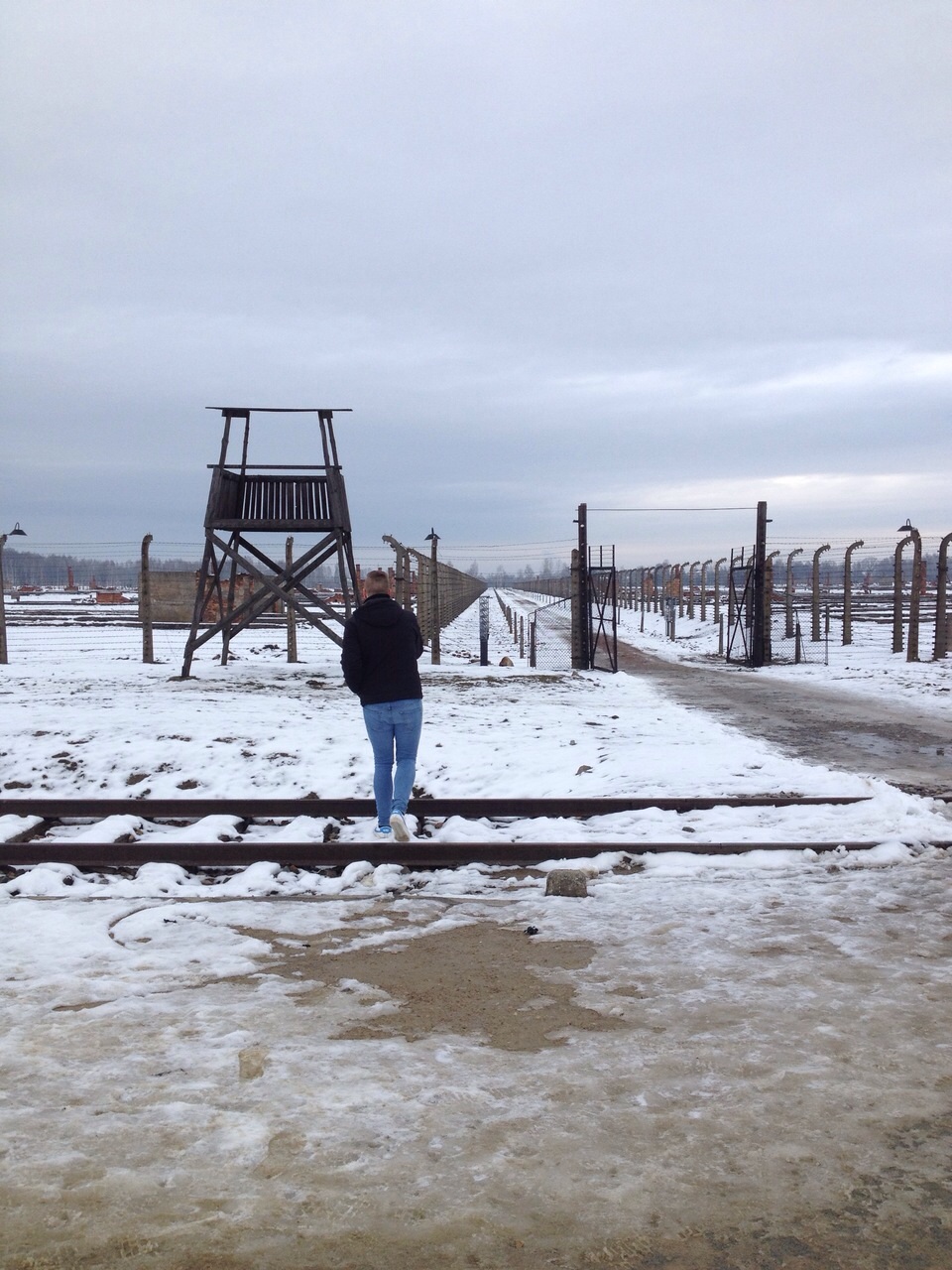Auschwitz, a fascinating place you must visit
/Taking in my surroundings at Auschwitz II-Birkenau.
I remember it vividly, the moment I turned the corner and was plunged into a state of shock at Auschwitz concentration camp.
I thought I was prepared for all eventualities, but clearly I had not done thorough enough research and the mound of human hair taken from the heads of prisoners was on display in one of the Auschwitz I was breathtaking.
I thought that inside, where the central heating was, it would be warm, but what I was seeing was just as chilling as being outside where it was below freezing and the ground was being smothered by a thick blanket of snow.
I knew beforehand the atrocities that had taken place at Auschwitz, and in all of the concentration camps across Europe under the Nazi regime. But it took looking at a physical part of the people themselves – even if it was clumps upon clumps of aged fibre, with one strand indistinguishable from the next.
But it wasn’t just the hair. There were thousands of shoes, prosthetics, disability aids, dishes and other personal belongings recovered that the Nazis has hoarded, and it all made for uneasy viewing.
The display of human hair at the Holocaust exhibit at Auschwitz I. It is probably the most jaw-dropping sight I've ever seen.
Come the end of the entire trip, amongst the horror, anger and frustration, I felt a level of satisfaction. I was satisfied because I’d been to one of the most unique places on the planet, and seen it first-hand.
The powerful lesson that Auschwitz teaches was underlined when I relayed a story we were told by the tour guide.
It was about a tourist asking the tour guide for a copy of one of the pictures of the inmates in the museum. When she pressed him for reasoning behind his request, he explained it was the first time he had seen his mother since she was taken away to Auschwitz all those decades ago, and he wanted a copy as a keepsake to remember her by.
It struck a chord with my own mother, who teared up at the sentiment.
How we did it
I took my girlfriend to Krakow as a present for her 21st birthday. The hotel we were staying in – Globus Rooms & Apartments – organised the Auschwitz trip for us within five minutes of enquiring at the desk. We paid them there, and with student discount the whole trip cost £20 (or roughly £25 without discount), which included transport, tickets and a guided tour.
We were picked up early in the morning by a nice minibus which went on to pick up two other couples along the way. It’s approximately an hour’s drive from the centre of Krakow, but there’s some nice scenery along the way to keep you occupied, and gave a little glimpse of rural life in Poland in the winter.
We were firstly taken to Auschwitz I which was the first site of the concentration camp before the bigger Auschwitz II-Birkenau opened in 1942. There we were greeted by a tour guide and taken around the site. It had been converted into a museum in 1947 as declared by the state, but was later revised under guidance from former inmates.
A sign reminding prisoners to proceed no further at Auschwitz I..
Auschwitz I is home to the original barracks which housed prisoners, has the infamous death wall where so many met their demise via firing squad, and also the former house and hanging place of camp commander Rudolf Hoss. We also got to see the inside of the only remaining crematorium, which was as harrowing as it sounds, and the ‘Arbeit macht frei’ (Work makes [you] free), which they afford plenty of time for tourists to take pictures of.
This is actually a picture of a replica 'Arbeit macht frei' sign. The original was stolen in 2009, and placed inside the museum upon retrieval and return.
We were also told about roll calls, where prisoners stood outside, regardless of weather conditions and usually for hours on end, and were subject to a head count by the guards. The story of the prisoners who had to stand deathly still for over 20 hours straight was heartbreaking.
After the first part of the tour came to a close, we were then packed back into the minibus and taken off to Auschwitz II-Birkenau, which is the largest of the three camps. There stands the iconic gateway that many passed through en route to their demise, as well as the railway line which extends all the way to the back.
End of the line: The gateway is visible at the front of Auschwitz, though is partly obscured by a tent which was used for the 70th anniversary of the liberation of Auschwitz remembrance service.
Many of the buildings at Birkenau were destroyed by the Nazis as they attempted to cover up the atrocities they caused, but they had already been found out, and left the remains of many buildings behind.
What stands most prominently at Birkenau is the massive electric fences and watch towers used to keep the prisoners imprisoned. Their intimidating stature serves as a reminder of how escape was a near-impossible task.
It is even claimed that birds don’t sing in Auschwitz, and haven’t done since the end of the Holocaust.
Again, we were taken on a fully guided tour, and towards the end were shown an iron slate, with one of the most poignant messages I’ve ever read.
Auschwitz is fascinating. And that is not a phrase of derision for those who suffered within its confines. But it is truly a place that pictures and tales alone won’t do justice. It has an eerie, yet somehow calming feel to it which can only be experienced in person.
How you can do it
Flights - Ryanair fly to Krakow from eight different UK destinations including Edinburgh, Manchester, Liverpool and London Stanstead from £55 return in early 2016.
easyJet have return flights available for early next year from six UK airports, including Edinburgh, Belfast, Liverpool and London Gatwick from £85.
Accommodation - Globus Rooms& Apartments have rooms available from £24 per night for a double, so if you’re splitting costs it isn’t badly priced. Here you can enjoy grand rooms, which are nicely kept and are warm in the winter. Although you’ll find people saying the passing trams cause the hotel to vibrate a little and are a noise problem, they add character to the property.
There’s also Good Bye Lenin Revolution Hostel, which has twin rooms with private bathrooms from £17 per night, if you are looking for an even cheaper option. Both provide fantastic locations between the old town and the main square.
Auschwitz - I would imagine that most, if not all hotels in Krakow will offer either their own tour packages or work with operators who do. The concierge or receptionist should be able to assist you with the booking, or help you find somewhere in the city that offers them.
You also have the option to pre-book online beforehand, with Escape 2 Poland and Viator offering Auschwitz tour packages – although I would suggest going through your hotel because going door-to-door makes everything a lot easier.
Other – Dress appropriately. In winter you’ll need several layers on to keep warm. Especially in Auschwitz II-Birkenau, because it’s a vast and open space, meaning that you’ll be susceptible to the elements.






















Here's the information you need to know if you plan on watching Wisla Krakow at Stadion Miejski.